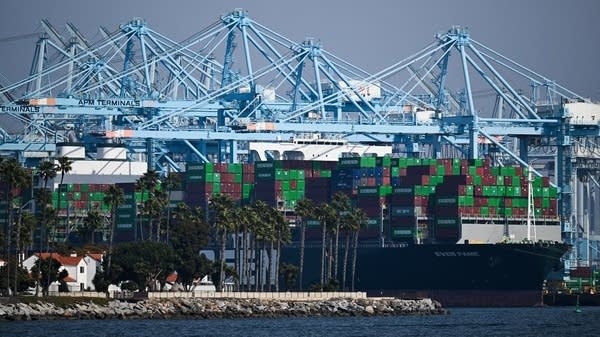Corporate titans, leaders of Fortune 500 companies, wearers of starched white shirts, winners of enormous paychecks and occupiers of corner offices with imposing black desks and gleaming glass views. It’s easy to conjure images of CEOs in offices… but what, exactly, is it that they do in there all day?
A CEO’s job isn’t one that’s easy to categorize. It doesn’t fit neatly into a one-slot job description like number-cruncher, analyst or ad-man. And when I contacted companies to try to coax out an answer, most said their CEO’s time was too tight for a discussion about how they spend it.
Andrea Prat, a professor of economics at Columbia Business School, who studies this exact corporate mystery, says over 80 percent of a CEO’s time “is spent in interactions with other people.”
To translate academic-speak into more conversational language: CEOs, says Prat, spend most of their days in meetings. And, he notes, most of the meetings are with employees inside the company. If you find yourself questioning this practice, concerned that meetings have a poor reputation as wasters of time, says Prat: “Surprisingly, that’s actually not what we find.”
Instead, he says, the more time a CEO spends in meetings with his or her employees, the better the company does.
“You can measure firm performance as productivity,” he says. “You can measure it as return on capital employed, or you can measure it as growth over time. This strong correlation exists even when we control for everything we observe about the firm – the industry, the location, the size, the capital employed.”
When CEOs aren’t spending the majority of their time with employees, it can be evidence of a serious problem. It can mean, says Prat, a focus on maintaining outside visibility for the CEO – a hedging of bets. That he or she may be polishing up their resume and keeping an eye on the horizon for other job opportunities. CEOs need to be steering the ship from the inside, mostly, via meetings.
Shazi Visram at a meeting to discuss packing design.
Sally Herships
And meetings were what were happening at the two companies that agreed to let their CEOs talk to a reporter. First, at Happy Family, a maker of organic food for babies, tots and kids, 37-year-old CEO Shazi Visram has been so busy all day she’s barely had time to – well….
“So I wanted to go to the bathroom like 20 minutes ago, but see, this is, that’s what happens.”
Visram is talking about getting sidetracked by trying to check in with her 80 fulltime employees. Something she says she tries to do whenever she’s in her New York headquarters, like today. There’s a group meeting to look at sketches of designs for product packaging, a one-on-one check-in about the design of the company website, a meeting to taste test new potential products. And in between, work on a charity project, an orphanage for kids overseas, writing an article, wrangling time zones and dialing codes to place international phone calls with Happy Family’s parent company, Danone. And of course, email.
“I probably get close to 500 emails a day on average,” says Visram. “Not every one needs a response, but every one needs to be read.”
A stressful prospect for any employee – C-Suite level or not. Luckily, at Sealed Air, a New Jersey-based company, with 25,000 employees, there is a special option available for the relief of nerves. Among the many products the company produces is bubble wrap. Enough, says Ken Chrisman, president of product care at the company, “to reduce the whole level of stress worldwide by at least 1 degree.”
Jerome Peribere, 59, is the company’s CEO. After a tour of the Secaucus, N.J., plant he pulled out a printed itinerary of his schedule for the day.
Peribere addresses staff at Sealed Air’s headquarters in New Jersey.
Sally Herships
Arriving around 7:15 a.m., Peribere caught up on emails, had a phone meeting, spoke to employees in New Jersey at a town hall meeting – and the schedule for the rest of the day? More meetings.
Sealed Air has over 100 manufacturing sites around the world, and Peribere estimates he spends 60 percent of his time traveling to visit customers, plants and offices.
At Happy Family, Visram says she does a little bit of everything – sales, marketing, management. Being a CEO, says Visram, requires a certain personality type – someone with a strong vision for the future.
“Yeah, I’m a little bossy – but in a good way. If a corporate culture is all about collaboration, and there’s no one person who can say, ‘you know what, this is great, but we’re going to do this and this is why,’ you’re asking for chaos.”
Andrea Prat says CEOs put in just over 11 hours at work every day. But he says it’s probable they work even more. His study is limited to the hours a CEO was observed working, or had been scheduled for work activities, by her or by her personal assistant.
Visram is so busy during the day she doesn’t have time to stop for lunch. Towards the end of the day she plans a meeting at a cafe – so she’ll have time to eat. But no one remembers to order food.
Sally Herships
“So if, for instance, after dinner they make phone calls or they do emails, we don’t observe that,” he says.
Being CEO, says Peribere, is more than a full time job, and isn’t limited to five days a week. “The good thing about the weekend is that you can spend quality time working,” he says.
Jerome Peribere at a lunch meeting.
Sally Herships
Visram is not only CEO of Happy Family, but also the company’s founder. She recalls putting in epic hours during its start-up phase. She was also pregnant.
“And I would literally think, ‘I’m not going to drink too much water right now, because I’m going to be on the phone for an hour and a half, and I don’t have the time to go and literally walk all the way down the hall,’ because the restroom was really far away.”
Visram would get so busy, she says, she used to sleep on the floor of her office – with a little blue blanket and a yoga mat, until an employee felt sorry for her and splurged on a $100 fold-out bed. She still keeps the yoga mat in a corner of her office. So when people bring up the touchy subject of high CEO pay, Visram says that while she’s not familiar with the workings of banking institutions, “the CEO pay scales that really get critiqued”– she is quick to voice her opinion about the pay scale of other corporate leaders:
“I believe that for the folks who are in that position, many of them have really earned it, and they’ve paid their dues,” she says. “I was the CEO for four years of this business, and I was making $36,000 a year, living in New York City, and I had an MBA from Columbia. So, I think it all balances out.”
Peribere, who is originally from France, says he applauds the American practice of publishing the salaries of top executives of public companies.
Peribere says the company has done well under his leadership.
Sally Herships
“I like very much this transparency with the concept of being paid for the value you create,” he says. “You have CEOs who have created zero value during their tenure. I think it is unfair to have very high salaries for people who have created zero value.”
He takes out his phone and pulls up a chart of Sealed Air’s stock performance dating back to before he started with the company.
“It was at $13 the day before my nomination has been announced,” he says. “And it is today at $35.”
Peribere says the company has done well, so the executive team should be rewarded – reasonably. And, he notes, not everyone is cut out to be CEO. A company’s leader has to be able to see the light at the end of the tunnel, he says, as well as to lead their team there. Like when employees use overly complex language in presentations, and he asks them “what do you mean?”
“And then the person tells you oh, what I meant is, ‘this is where we are, this is where we’re going and these are the five things we need to do to get there.’ And my answer systematically is – just say so. Business is simple; people make it difficult.”













